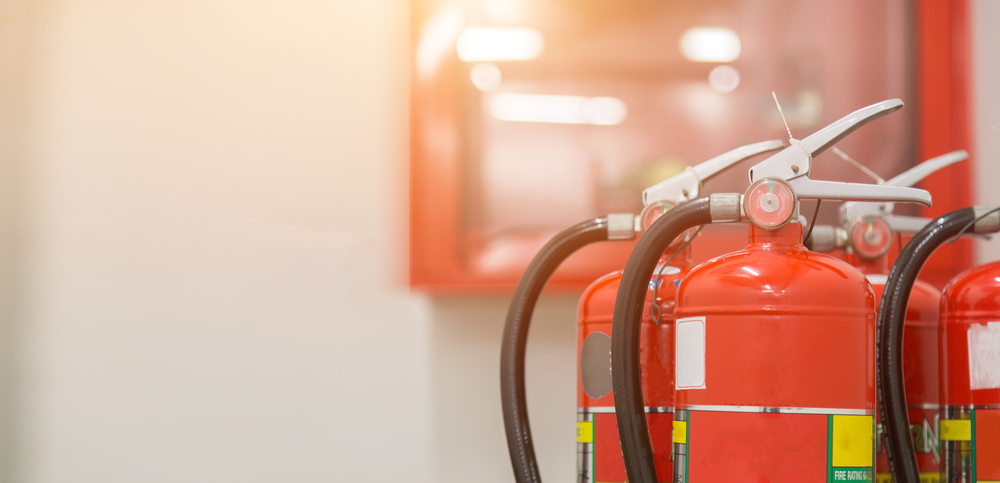Did you know that there are four systems when it comes to fire control equipment? If you own/manage a business or workplace, then it is compulsory to have these systems in place to ensure the safety of your staff and visitors. The following article on these four fire control equipment and systems was published on firecs.co.uk and we felt you may find it useful too…
1. FIRE EXTINGUISHERS
It sounds obvious, but fire extinguishers are one of the most essential aspects of the fire safety systems you’ll need to install in your building. The vast majority of buildings, such as office blocks, shops and schools, are legally required to have at least 2 Class A extinguishers per floor. The legal requirements also require you to name a Responsible Person, who will be responsible for ensuring these extinguishers are serviced yearly.
Some businesses may also need other types of fire extinguishers. You should ensure that trained fire safety professionals carry out a full fire safety audit on your premises, identifying the key fire risks and then installing the correct fire extinguishers to discharge your legal obligations, but more importantly, to keep your property and employees safe.
2. DRY RISERS
Dry riser systems are usually required in properties over 18 metres tall. A dry riser fire control system is essentially a series of pipes connecting to outlets on each floor, with an access pipe at ground level. This allows the emergency services attending a fire to connect the inlet pipe to their appliance and then pump water up, through the pipes, to the needed floor.
A dry riser system will be built within most buildings over 18m tall at point of construction, but they can sometimes be retrofitted to older buildings, for example if there’s a change in use of the building. Regular servicing of a dry riser system is essential to ensure it performs properly in the event of a fire.
3. WET RISERS
A wet riser system is similar to a dry riser, but the system is kept full of water. They’re commonly seen on buildings over 50 metres tall. The value of a wet riser is that emergency services do not need to use their own appliances to provide water to the upper levels of a building.
Wet riser systems must be regularly serviced. Vandalism, theft and pipework blockages can and do occur, and these will significantly affect the fire safety of the building.
4. SPRINKLER SYSTEMS
There are lots of different types of fire sprinkler systems, and each operate in slightly different ways. The advantage of a sprinkler system over the other types of fire safety systems described above is that these types of systems will actively fight a fire that breaks out without human intervention.
Sprinkler systems are an important part of fire safety, and they can protect buildings and people very effectively. If you do have a fire sprinkler system installed, it will need regular testing and maintenance to both continue to operate safely and to comply with fire safety legislation.
You can read the full article on fire control equipment was published on firecs.co.uk.
Do you need support ensuring your fire control equipment and systems are up to date and adhere to the current guidelines and rules? The team at Total Safe UK can help and support you with this with a comprehensive fire risk assessment, fire extinguisher maintenance, fire alarm system installation and much more. Take a look at our full list of fire safety services and contact us today for further information.

